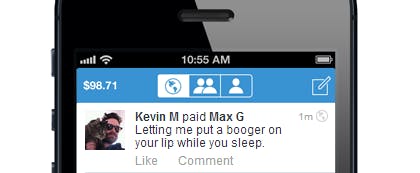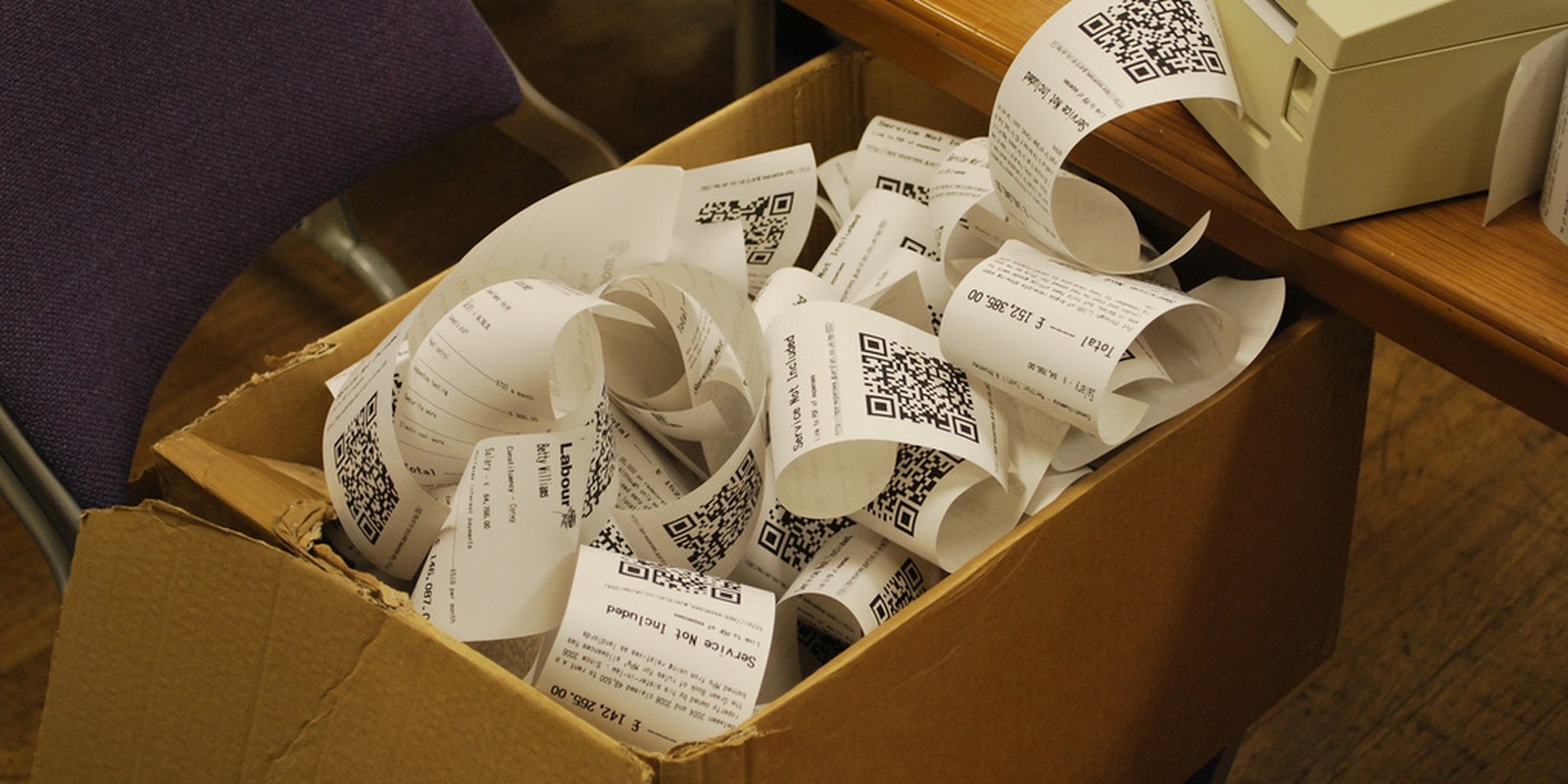Yesterday, the Internet had a pretty good time making fun of Jack Dorsey. The Twitter cofounder and Square CEO (he of many Web startup hats, really) was making a speech at the National Retail Federation’s conference when he said this:
“What if we see the receipt more as a publishing medium — a product unto itself that people actually want to take home, that they want to engage with, be fully interactive with? What can we do with this everyday tool? What can we build into this canvas that’s actually valuable, that’s independent of the product you just sold? What can you give in this communication channel, this publishing medium, that people want to engage with?”
If you’re instinct is to slow blink a few times and then point and laugh at this silly old man, you’re not alone. Receipts are those annoying things that will forever cover the bottoms of our purses, pockets, and backpacks. And that’s it. Right?
If the current generation of Web startups is guilty of one thing, it’s trying too hard to make products social. Not everything needs to be a medium for conversation. Not everything needs a feed. Some things—like, maybe a receipt—can just be what they are.
But then I started thinking a little more about it. Maybe he’s right. Maybe the fault doesn’t lie entirely with startups, but with us. Consider online payment service Venmo. If you don’t use Venmo, you should. It’s easier to use than PayPal, and you can connect with your friends and immediately send them money. Things like paying rent, splitting the bill, and lending someone five bucks has never been easier.
And also, it has a feed. A hilarious, hilarious feed.
In order to pay someone, you have to include a memo, or a reason. I remember way back in the day when I used to write checks to pay rent (ha ha, I’m old) I very much enjoyed writing things I found to be quite funny in the memo line: “Lap dances” for my rent. “Tons o’ drugs” for that group dinner. Venmo has only escalated this game.
The live feed is a competition for who can be the most clever, the most hilarious, who can one-up their friends with each payment. Some are earnest, some are boring, some are simple. But we’re sharing money, and with them goes an automatic conversation.

And a lot of that is because we’ve been conditioned. Everything is worth sharing. To these products and platforms, our most mundane, uninteresting moments are little pieces of magic. Amazon Reviews are a thing of wonder; Chirpify lets you pay for things via tweets and hashtags. We Instagram and tweet receipts as proof we bought or did these things. It’s almost like saving tickets from a game or a show.
My recent amazon receipt should tell you where my head is at these days. pic.twitter.com/pSK7llnQxo
— crabstickz (@Chris_Kendall_) January 14, 2014
How many stories revolve around receipts posted to social sites, and the backlash that followed these shared moments? A few. A lot, actually.
Is it really so crazy that Square is watching all of this and trying to pinpoint how to turn a receipt into a piece of social currency? Nothing is between just you and me anymore, it’s between you and me and all of Facebook, or all of Twitter, or Reddit, or whatever.
I will admit that calling a receipt a “canvas” and a “publishing medium” is like calling a napkin a “personal purifier,” but social products only do the things we allow them to. So if you’re digital receipts start have a share buttons and hashtags for future savings or customizable update bars… well, we only have ourselves to blame. Or, maybe, to thank.


